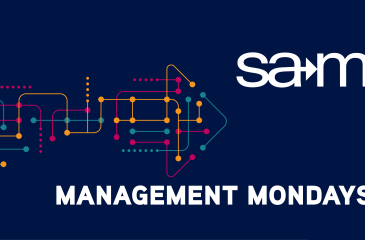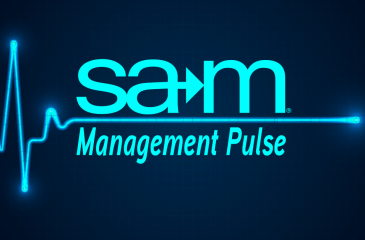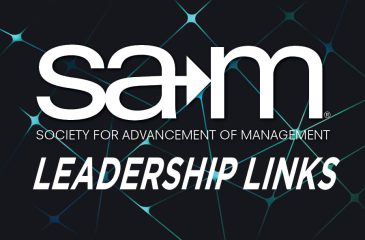Posts by Patrick Endicott
-
Digital Fluency for Project Professionals: What You Actually Need to Know
In a world where nearly every project involves digital tools, platforms, or data in some form, digital fluency is no longer optional for project professionals. It is essential. But digital fluency does not mean being an IT expert or knowing how to code. It means understanding how digital tools influence decision-making, collaboration, and delivery across every phase of the project lifecycle. For many project managers, the challenge is not the absence of technology but the volume of it. Choosing the right tools, using them effectively, and interpreting their outputs confidently is what sets capable leaders apart from those who get overwhelmed.
-
Innovation Isn’t a Department: How to Lead Project Teams That Actually Think Differently
Innovation has long been treated as something that happens in a specific department or under special circumstances. In many organizations, the task of thinking creatively is assigned to a designated group, often isolated from day-to-day operations. But in today’s fast-paced, interconnected environment, this approach no longer works. Creativity and problem-solving cannot be siloed.
-
How Project Management Drives Real Impact in Social and Humanitarian Work
Project management is often associated with budgets, schedules, and corporate goals. While those applications are important, they represent only part of the profession’s true potential. Across the globe, project managers are quietly leading some of the most critical efforts in humanitarian relief, public health, environmental sustainability, and community development. These initiatives are rarely easy, and the stakes are often higher than any profit margin. In these environments, success can mean restored health, saved lives, and rebuilt communities. Project management provides the structure, coordination, and leadership necessary to achieve those outcomes under pressure. It allows passionate people and skilled professionals to collaborate in meaningful, effective ways.
-
Why Strategy Needs Project Managers Now More Than Ever
For many years, project management was seen as a behind-the-scenes function. It was about hitting milestones, tracking schedules, and delivering results once a strategy had already been set. But today, […]
-
Relationship-Centered Leadership: The Model That Actually Lasts
Leadership is often described in terms of outcomes, such as hitting performance targets or managing change. While results matter, the most enduring form of leadership is built on relationships. The quality of your connections with others determines how much influence you have, how well your team functions, and how resilient your workplace culture becomes over time. Leadership is not just what you accomplish. It is how you relate to others while doing it.
-
Why Stability Beats Charisma: Building Environments People Can Count On
In many workplaces, charismatic leaders often get the spotlight. Their energy, bold vision, and persuasive communication style can draw attention and inspire action. While charisma can be useful in certain […]
-
CarMax CEO Transition: Turning Leadership Change into Strategic Renewal
CarMax’s announcement that CEO Bill Nash will step down marks more than a change in leadership. It represents a deliberate opportunity for renewal. By appointing board member David McCreight as interim CEO, the company signaled a commitment to stability, transparency, and strategic reset. For managers, this transition illustrates how leadership changes can serve as moments to refocus strategy, refresh culture, and strengthen stakeholder confidence.
-
Leadership Links #22
This week’s Leadership Links tracks five moves that turn strategy into results. Diageo names Dave Lewis to sharpen brand focus, Newmont details integration after its Newcrest deal, MongoDB signals product speed with a planned handoff, Honeywell’s aerospace spinout picks an insider to set Day One pace, and Britannia maps a steady path through a leadership change.
-
Loyalty Without Blindness: How to Stay Committed While Staying Honest
Loyalty has long been viewed as a virtue in the workplace. Employees who are considered loyal are often praised for their commitment and reliability. However, today’s work environments are fast-moving and constantly evolving. As a result, loyalty cannot mean what it used to. It should no longer be defined by blind allegiance or staying in place no matter the circumstances. Loyalty now involves mutual respect, honesty, and a shared commitment to the greater mission. It must be redefined as active engagement rather than passive agreement.
-
Margin Pressure and Management Discipline: Lessons from Waste Management’s Third Quarter
The latest results from Waste Management, Inc. reveal a challenge that many organizations face today: strong revenue growth paired with shrinking margins. The company reported revenue of approximately 6.44 billion […]
-
Leading Across Silos: Building Coalitions That Actually Work
In many organizations, the biggest obstacles to progress are not technical or strategic. They are relational. Silos form naturally when teams become focused on their own goals, processes, and language. While specialization has its advantages, it often leads to missed opportunities, duplicated efforts, and miscommunication. The leaders who succeed in these environments are those who know how to build coalitions, not just manage tasks.
-
Corporate Culture Messaging in Times of Political Change
In an increasingly interconnected and polarized world, corporate culture does not exist in isolation. It sits at the intersection of leadership, stakeholder perception, and broader political realities. A recent study from the University of New Mexico has added empirical weight to what many executives already sense intuitively: when national leadership or political orientation changes, organizations often shift how they describe and project their internal culture. These shifts are visible in earnings calls, public statements, and marketing language, reflecting how organizations attempt to navigate changes in the broader political and social environment.
-
Spotlight on Leadership: Jamison Lewis
The Society for Advancement of Management (SAM) is proud to recognize Jamison Lewis, a remarkable leader whose dedication, academic excellence, and service have made a lasting impact on both the SAM community and the broader world of higher education.
-
Trust Is Built in the Small Moments: How to Lead with Consistency
Trust is one of the most important currencies in the workplace, yet it is often misunderstood. People tend to equate trust with honesty, assuming that as long as they tell the truth, trust will follow. While honesty is essential, it is only one part of the equation. Trust also involves dependability, discretion, empathy, and how well you follow through on what you say. These qualities are shaped not by big promises, but by the repeated behaviors that others observe over time.
-
Santos CFO’s Exit Highlights Succession Risk and Governance Gaps
The abrupt resignation of Santos CFO Sherry Duhe exposes critical lessons about succession risk, governance maturity, and leadership resilience. This article explores how sudden executive departures test organizational continuity, stakeholder trust, and board accountability.
-
Resilience as a Team Sport: Why You Can’t Bounce Back Alone
When we talk about resilience in the workplace, we often imagine the lone professional who endures pressure with grace, bounces back from failure effortlessly, and thrives in high-stress situations without missing a beat. This narrative may be inspiring, but it is also misleading. Resilience is rarely built in isolation. Instead, it is shaped and sustained by the relationships and support systems that surround us.
-
NI Holdings’ New CEO: Turning Board Confidence into Execution
NI Holdings, a provider of specialty insurance and business services, has appointed Cindy Launer as President and CEO effective October 10, 2025. She succeeds Seth Daggett, who stepped down to pursue other opportunities. Launer is no stranger to the organization. She has served on the company’s board of directors and previously stepped in as interim CEO, giving her an established reputation within both leadership and operational circles.
-
The Power of Everyday Forgiveness: Letting Go Without Letting Down
Forgiveness is often seen as a deeply personal virtue, something reserved for close relationships or moments of profound hurt. In the workplace, however, forgiveness plays an essential but often overlooked role in leadership. When conflict, mistakes, or unmet expectations arise, the ability to forgive allows a leader to reset the tone and restore trust. This doesn’t mean ignoring problems or letting people off the hook. Instead, forgiveness gives us a way to move forward without letting the past permanently stain the relationship.
-
Burberry’s DEI Rollback: Embedded or Invisible?
Burberry has taken a step that reignited global debate about the future of workplace inclusion. The company announced the elimination of its head of diversity position and plans to reduce […]
-
Leadership Links #17
This week’s edition spotlights how companies are tuning leadership roles to match strategy in a fast moving market. Microsoft is creating a dedicated commercial CEO to tighten execution while Satya Nadella concentrates on AI and core architecture. Apple’s succession chatter centers on hardware leadership. H-E-B advances an experienced operator to a historic first. S&P Dow Jones Indices chooses a derivatives and data veteran to lead its next chapter, and Unilever strengthens people leadership across customer development, supply chain, and digital work.
-
Accountability Without Authority: Holding Everyone to a Higher Standard
Accountability often brings to mind images of confrontation, discipline, or even public reprimand. In many workplaces, the word has been misused so frequently that it now carries a negative tone. Yet accountability, when practiced with intention and care, is one of the most valuable tools for personal and organizational growth. Rather than a mechanism for blame, it should serve as a structure for clarity, consistency, and shared purpose.
-
GSK CEO Transition: Balancing Legacy, Expectation and Renewal
Leadership transitions in the pharmaceutical industry carry stakes that extend far beyond shareholder headlines. The recent announcement that Emma Walmsley, CEO of GlaxoSmithKline (GSK), will step down at the end of 2025 represents one of those inflection points. Walmsley, who has guided the company since 2017, will remain through September 2026 to support continuity while Chief Commercial Officer Luke Miels takes over as CEO on January 1, 2026.
-
Reclaiming Joy at Work: The Case for Collaborative, Caring Workplaces
In many workplaces, joy has become an afterthought. The pressure to meet deadlines, hit performance targets, and keep up with nonstop change leaves little room for fulfillment or connection. Over time, this constant pressure erodes enthusiasm. What was once meaningful work begins to feel mechanical. Employees focus on surviving the week rather than thriving in their roles. While organizations may not intend to drain energy from their teams, a culture of stress can become normalized if no one steps back to challenge it.
-
Gucci’s Leadership Reset under Kering: Francesca Bellettini’s Mandate and the Urgency of Heritage Forward Strategy
Gucci, one of the most recognized names in the luxury sector, is entering a defining chapter in its history. Sales have fallen by roughly twenty five percent and profits have been cut nearly in half, creating a sharp contrast to the brand’s legacy of strength and influence. These numbers reflect more than short-term turbulence. They signal a deeper vulnerability at a time when competition in the luxury market is more intense than ever.
-
Leadership Links #15
IndusInd Bank of India has appointed Viral Damania as CFO effective September 22, 2025. This follows a $230 million loss tied to accounting irregularities of internal derivative trades. The accounting lapse also prompted earlier resignations by former CEO Sumant Kathpalia and deputy Arun Khurana. Damania, with 27 years of banking experience including senior finance roles at Bank of America India and Citibank North America, is expected to help stabilize financial reporting, reinforce internal controls, and rebuild credibility.




